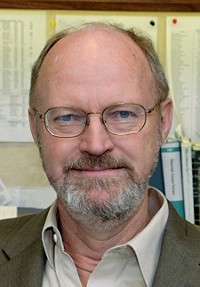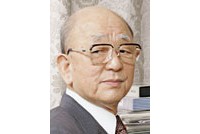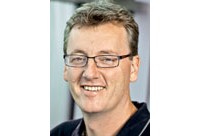Advertisement
Grab your lab coat. Let's get started
Welcome!
Welcome!
Create an account below to get 6 C&EN articles per month, receive newsletters and more - all free.
It seems this is your first time logging in online. Please enter the following information to continue.
As an ACS member you automatically get access to this site. All we need is few more details to create your reading experience.
Not you? Sign in with a different account.
Not you? Sign in with a different account.
ERROR 1
ERROR 1
ERROR 2
ERROR 2
ERROR 2
ERROR 2
ERROR 2
Password and Confirm password must match.
If you have an ACS member number, please enter it here so we can link this account to your membership. (optional)
ERROR 2
ACS values your privacy. By submitting your information, you are gaining access to C&EN and subscribing to our weekly newsletter. We use the information you provide to make your reading experience better, and we will never sell your data to third party members.
Synthesis
ACS Award For Creative Work In Fluorine Chemistry
Recipients are honored for contributions of major significance to chemistry
by Kenneth Moore
January 14, 2008
| A version of this story appeared in
Volume 86, Issue 2
Sponsored by SynQuest Laboratories Inc. and Honeywell
Dennis P. Curran believes that his interest in chemistry is genetic: Both his brother, Kevin, and his father, Bill, who is a 50-year American Chemical Society member, are organic chemists. Though his daughter Kelly is an undergraduate history major, his older daughter, Molly, completed a bachelor's degree in engineering and a master's degree in engineering management, and she took organic chemistry "for fun," according to her grandmother, Jane. Curran's father never pushed him to chemistry, Jane says. She adds, "I bought him his chemistry set."
Curran, 54, began his path in chemistry in 1971 at Boston College, where he was inspired by T. Ross Kelly, his "Introductory Organic Chemistry" professor. He completed a Ph.D. at the University of Rochester and a postdoctoral fellowship at the University of Wisconsin, Madison, and is now a Distinguished Service Professor and Bayer Professor of Chemistry at the University of Pittsburgh.
Curran says his interest in fluorine chemistry arose after reading a "spectacular" Science article (1994, 266, 72) by István T. Horváth and József Rábai, on catalytic chemical transformations using a fluorous biphase system. Curran's research group has projects in organic radical chemistry, but he says they have always had problems separating organotin reagents from their products. Horváth and Rábai's article inspired him to learn about organofluorine chemistry, which he found could help his group's research. "Once we started doing offbeat but simple experiments and getting exciting results, I was hooked," Curran says.
Although Curran initially considered himself an "outsider," his excitement about fluorine chemistry has had a great deal of impact on the field. His contributions to fluorous chemistry include the creation of a fluorous solid-phase extraction technique and the introduction of many new fluorous protecting groups, scavengers, reagents, and catalysts. G. K. Surya Prakash, the George A. & Judith A. Olah Nobel Laureate Chair in Hydrocarbon Chemistry at the University of Southern California, Los Angeles, says Curran "has shown the creativity to consistently take the fluorous field in new directions." He adds that other groups have made many "innovative and potentially very important contributions," such as oligosaccharide synthesis with fluorous microarrays, "which follow directly from concepts and techniques that Curran introduced and pioneered."
"The original uses of fluorous chemistry in small-molecule synthesis and separation have expanded dramatically in recent years to biomolecule synthesis, natural products isolation, proteomics, microarrays, and others," Curran says. Because of this expansion, he has been able to commercialize his discoveries in fluorous chemistry: In 2000, he started a company called Fluorous Technologies, which provides tags, scavengers, reagents, and custom compounds and services.
Curran is an ISI Highly Cited Researcher, among the top 100 in chemistry, and holds many awards, including the 2000 ACS Award for Creative Work in Synthetic Organic Chemistry and the 1998 Janssen Prize for Creativity in Organic Synthesis. He has published 358 articles, has 29 patents and dozens more pending, cowrote the book "Stereochemistry of Radical Reactions: Concepts, Guidelines, and Synthetic Applications," and has edited or coedited four other books, including the "Handbook of Fluorous Chemistry."
The award address will be presented before the Division of Fluorine Chemistry.






Join the conversation
Contact the reporter
Submit a Letter to the Editor for publication
Engage with us on Twitter